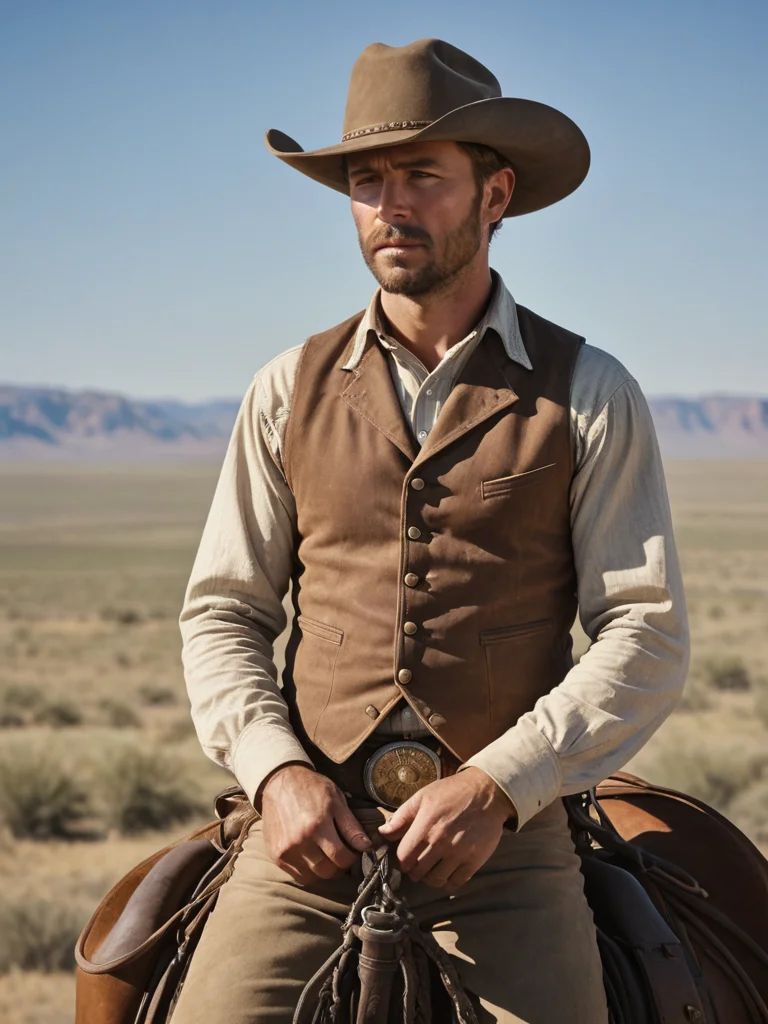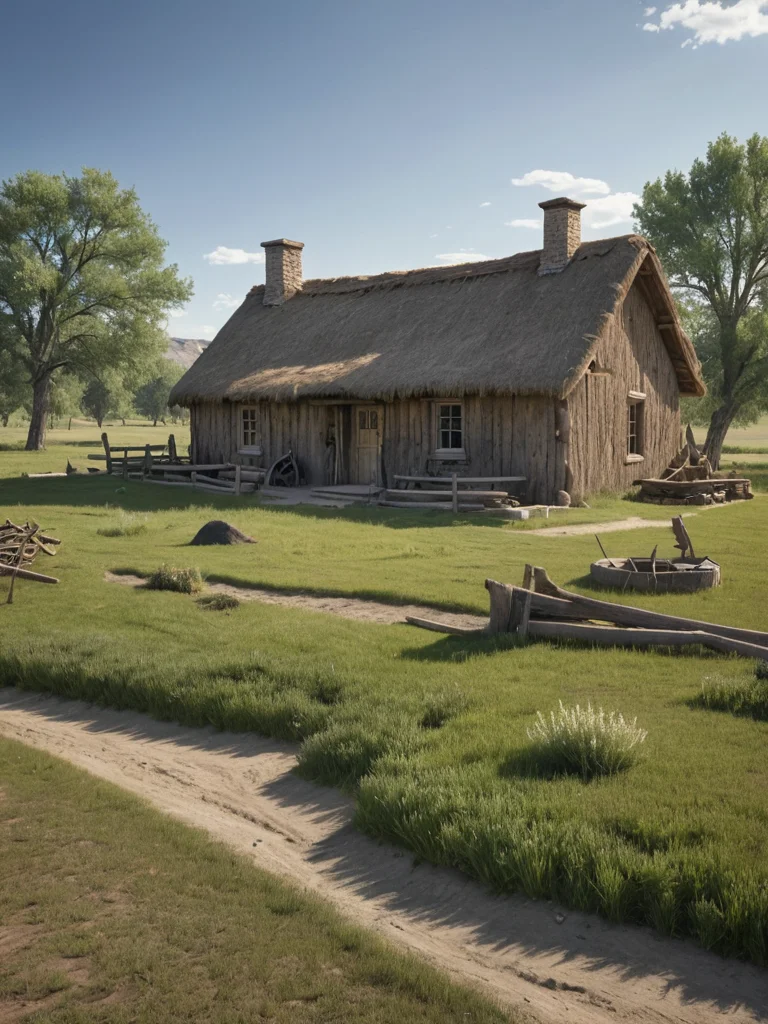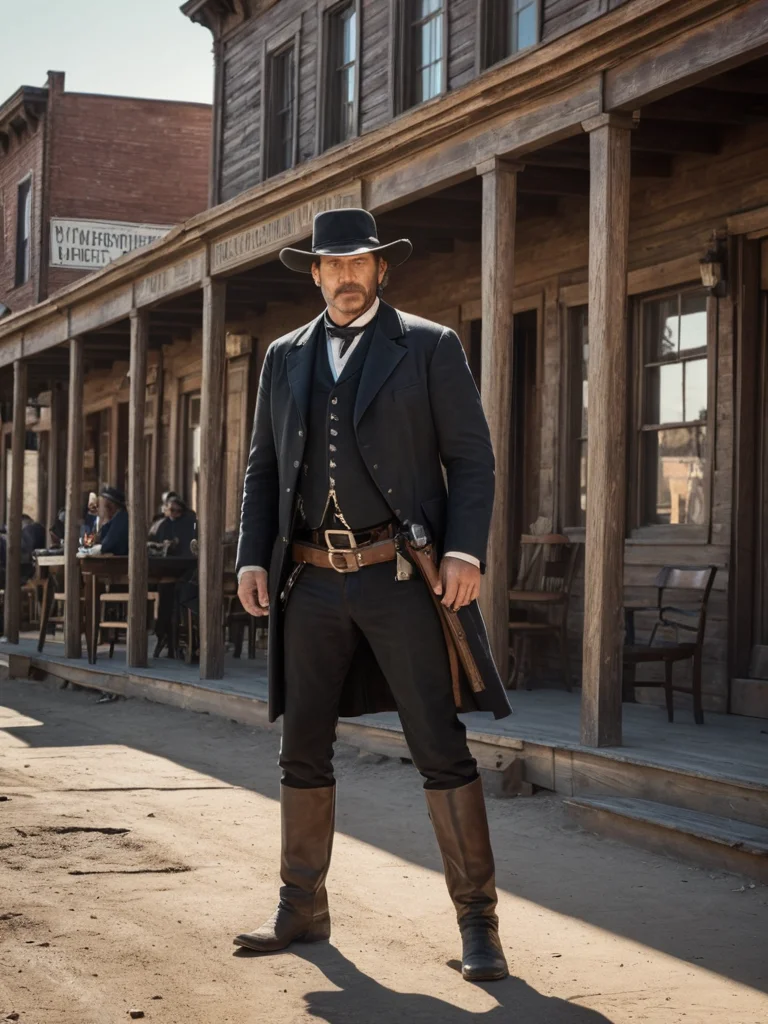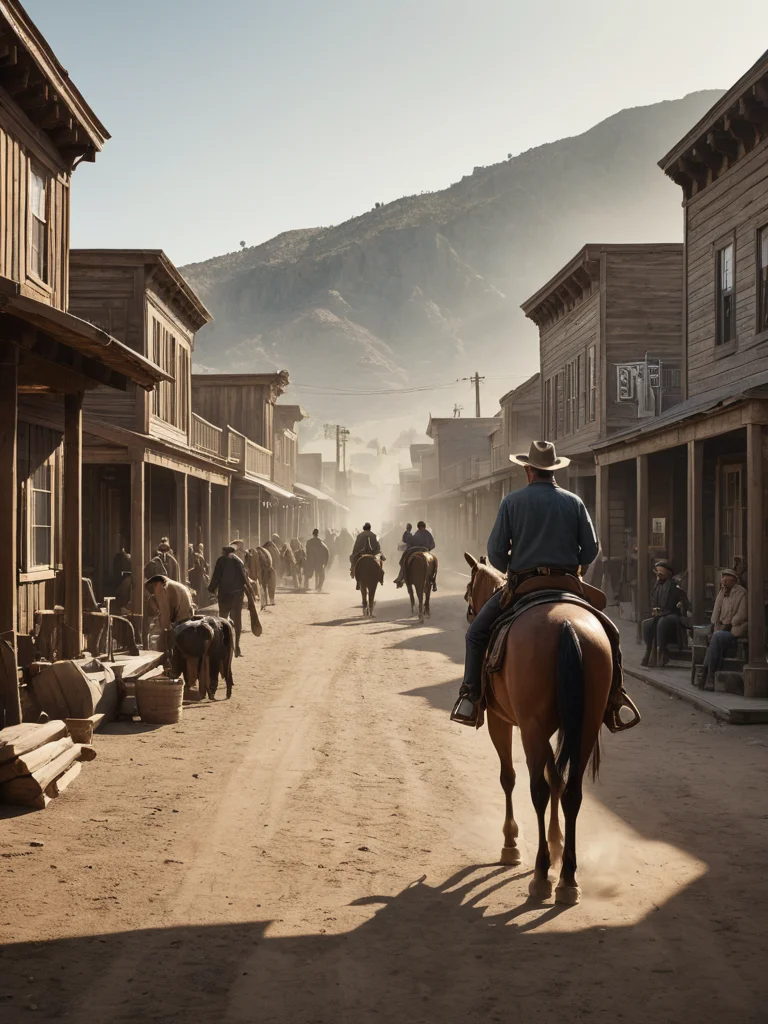Imagine the Wild West: vast prairies, galloping cowboys, saloon shootouts, and ruthless outlaws on the run from the law. This is the image that cinema, literature, and comics have cultivated for decades, embedding it in our minds as an integral part of American history. However, historians argue that the cinematic Wild West is merely a beautiful, yet distant, depiction created for public entertainment.
The Wild West: Hollywood Myths vs. The Harsh Truth About Cowboys, Farmers, and Outlaws
According to historical research, the real Wild West, or the Frontier, existed for a relatively short period, roughly from the mid-19th century to the early 20th century, peaking between 1865 and 1890. It was less a geographical region and more a dynamic process of settling new lands stretching from the Great Plains to the Pacific Ocean. This era was a time of incredible change, brutal struggles for survival, and clashes of cultures. It was here, on the border of civilization and wilderness, that a unique American character was forged – a blend of independence, resilience, and a willingness to take risks.
Hollywood Westerns often portray the Wild West as a place dominated by a few archetypes: the noble cowboy, the ruthless outlaw, the valiant sheriff, and the brave but often passive woman. However, the reality was far more multifaceted and complex. Historians emphasize that the population of the Frontier was incredibly diverse: Native Americans, European immigrants (Germans, Irish, Scandinavians), Chinese, African Americans, Mexicans – all striving to find their place under the sun, facing unprecedented hardships. Each brought their customs, knowledge, and hopes, creating a unique mosaic of societies.
The aim of this article is to look beyond popular stereotypes and delve into the daily lives of those who truly built and settled the Wild West. We will explore what cowboys actually did, how farmers survived in harsh conditions, and what the real picture of frontier crime was, which was often far from romanticized duels and noble bandits. You will learn that behind all the legendary dust lay a story of hard work, despair, hope, and extraordinary human resilience. Historians pay special attention to studying archival documents, letters, and diaries, which allow us to reconstruct the authentic atmosphere of those years, showing that life on the Frontier was much more complex and interesting than any, even the most thrilling, movie script.
The myths of the Wild West were shaped not only by the film industry but also by the “dime novels” of the late 19th century, which created heroic images of gunslingers and adventurers. These stories, while captivating, rarely reflected the genuine dangers and difficulties ordinary people faced. The real West was a place where people battled nature, poverty, disease, and social isolation, not just outlaws. Understanding these realities allows us to appreciate the true contribution of the pioneers who, despite all obstacles, laid the foundation for the modern development of the American West.
Life in the Saddle: What a Real Cowboy Actually Did and Wore (and How Much They Were Paid)

When we say the word “cowboy,” most of us picture a dashing rider in a wide-brimmed hat, with a revolver at his hip, ready for a shootout at any moment. However, as historians note, the real cowboy was more of a professional herdsman whose life was filled with hard, monotonous labor, dust, and sweat, rather than a gunslinger and adventurer. The cowboy’s primary task was to herd cattle, drive them long distances to railroad stations, and ensure their safety. It was grueling work requiring immense stamina, patience, and skill.
The daily life of a cowboy was far from romantic. Much of their time was spent in the saddle, far from civilization, in the endless prairies. They worked under the scorching sun in summer and in biting cold in winter, often facing storms, blizzards, and droughts. A typical workday began at dawn and ended late at night, often under the starry sky. Long cattle drives, known as “drives,” could last for months, during which cowboys ate simple food – mainly beans, salted meat, and hardtack, washed down with strong coffee. Hygiene was minimal, and sleeping arrangements were usually outdoors, on the ground.
Unlike the cinematic image, a real cowboy’s wardrobe was purely practical. The wide-brimmed hat (the same “Stetson”) was indeed indispensable – it protected from the sun, rain, and dust, and could also serve as a water dipper or a fan for the campfire. A bandana was usually worn around the neck, which could be pulled over the face to protect from dust during cattle drives or used as a bandage. The cowboy shirt was made of durable fabric resistant to wear. The main clothing item was jeans – sturdy trousers capable of withstanding harsh working conditions. An important part of the gear was chaps – leather or fur coverings for the trousers, protecting the legs from thorns, branches, and snake bites. The revolver, while present, was more a tool for self-defense against wild animals or rare encounters with outlaws than an item for daily duels.
Regarding wages, historical data indicates that cowboys were far from wealthy. The average salary of a cowboy in the late 19th century was about $25-40 per month, which was a modest income for the time. Often, they were paid not with money but with food, lodging, and the use of a horse. This amount did not allow for accumulating wealth and rarely provided a comfortable existence. Most cowboys did not own land or cattle, moving from one job to another. Seasonal employment was common, and many had to find other work during the winter months.
Interestingly, there were many people of different nationalities among the cowboys. Historians point out that a significant portion were Mexicans (vaqueros), who brought many cattle-handling techniques to the American Wild West, as well as African Americans, who, after the Civil War, found opportunities for work in the West that were unavailable to them in the South. There were also Native Americans, European immigrants, and even female cowboys, which makes the image of the “white gunslinger” even more mythologized. Life in the saddle was harsh, but it forged a unique image of a person who, despite all difficulties, remained loyal to his difficult and dangerous profession.
From Plow to Saloon: The Untold Story of Survival and World-Building by Pioneer Farmers

If cowboys became the symbol of the Wild West, then pioneer farmers were its true, but often forgotten, foundation. It was they, not the gunslingers and outlaws, who constituted the overwhelming majority of the Frontier population, and it was their hard work that paved the way for settled life and agricultural development, which became the bedrock for the creation of new states. Historians emphasize that farmers were the main agents of civilization in the West, transforming wild lands into fertile fields.
The influx of settlers to the West significantly increased after the passage of the Homestead Act in 1862. This law granted any citizen or immigrant over 21 years of age the opportunity to obtain 160 acres (about 65 hectares) of land, provided they lived on it for five years and cultivated it. The promise of free land attracted millions of people from all corners of the US and abroad, but the reality proved much harsher than the attractive prospectuses.
A farmer’s life on the Frontier was a continuous struggle. Much of the land on the Great Plains was arid, and its cultivation required incredible effort and adaptation. Farmers faced unpredictable weather: droughts, dust storms, tornadoes, hail, and harsh winters that could destroy entire crops and lead to starvation. Locust infestations, livestock diseases, and lack of access to markets were also constant threats. Many early settlers lived in primitive dwellings, such as sod houses, built from turf, as timber was an extremely rare and expensive resource.
The daily life of a farming family was filled with hard physical labor. Men were involved in plowing, sowing, harvesting, building and repairing, as well as caring for livestock. Women played an equally, and sometimes more, important role. They not only managed the household, cooked, washed, and cleaned but also helped in the fields, milked cows, made butter and cheese, sewed clothes, grew vegetables in the garden plot, and, of course, raised children. Often, they were the sole nurses and teachers for their families. Isolation was a huge problem, and many women suffered from depression and homesickness for civilization. However, it was their resilience and ingenuity that allowed families to survive.
Despite all the difficulties, farmers strove to create communities. Churches and schools often became the first public buildings around which settlements formed. Organizations like “The Grange” united farmers for joint purchasing, sharing experiences, and lobbying their interests. It was through such initiatives that they managed to cope with isolation and build the foundations for future towns.
The saloon, contrary to Hollywood myths, was not just a place for drunken brawls and gambling. For many farmers and settlers, it served as an important social center. It was a place to get the latest news, meet neighbors, make deals, receive mail, and sometimes even participate in political debates. For men who worked hard all day, the saloon offered a rare opportunity to relax, have a drink, and socialize, relieving stress after a hard day or week in the field. Often, the saloon was one of the first substantial buildings in a new settlement, symbolizing the emergence of urban life and trade. Thus, it fulfilled not only an entertainment but also an important social function in the harsh conditions of the Frontier.
Guns and Despair: The True Picture of Crime and the Struggle for Order on the Frontier

The image of the Wild West is inextricably linked with revolvers, shootouts, and main street duels. Hollywood films often depict a scene of constant anarchy where justice is dispensed only by the most accurate shooters. However, historians argue that this perception is greatly exaggerated. The real Wild West was undoubtedly a dangerous place, but crime there had its specifics, and “duels” as shown in movies were extremely rare, much dirtier and faster than the dramatic showdown between two cowboys.
The most common types of crimes on the Frontier were not bank robberies but rather cattle rustling, horse theft, and land disputes, which often escalated into fierce conflicts. The value of a horse or cow at that time was immense, and their theft could deprive a person of their livelihood. Often, these crimes were committed not by organized gangs but by desperate or poor individuals who saw it as the only way to survive. Petty fraud, saloon hooliganism, and rare murders, usually related to personal quarrels, were also part of daily life.
The sensational train or stagecoach robberies that are so beloved in movies, while they did happen, were not as frequent or always as successful as portrayed. They required careful planning and great daring, and the risk of capture or death was very high. Gangs like Jesse James’s or the Daltons became legends precisely because they were exceptions, not the rule. Most criminals were loners or small groups operating in limited areas.
The struggle for order on the Frontier was a difficult task. Law enforcement agencies were extremely few and often ineffective. Sheriffs, marshals, and other lawmen had to operate over vast territories with limited resources. Often, they themselves were former criminals or individuals with questionable reputations. The lack of a developed judicial system, roads, and communication made the apprehension and punishment of criminals extremely challenging. This is why “vigilante justice” flourished in some territories – mob rule, where local residents took justice into their own hands, forming posses to catch and punish criminals. This often led to unfair sentences and violence, but in the absence of state authority, it was considered a necessary measure to maintain some semblance of order.
Carrying weapons was common in the Wild West, but their use was much more regulated than commonly believed. Many towns had strict laws prohibiting the carrying of weapons within town limits or requiring them to be checked upon entry. Firing a gun without good cause could lead to serious trouble with the law. A revolver was a tool intended for protection against wild animals, snakes, or, in extreme cases, people, but not for resolving every dispute. Historians note that most shootouts were quick, chaotic, and often ended in accidents rather than epic duels where opponents stood facing each other. Often, these were sudden skirmishes caused by alcohol, card debts, or personal grievances, and their outcome rarely depended on marksmanship, but rather on luck or surprise.
Thus, the true picture of crime on the Frontier was far from romanticized myths. It was a struggle for survival, where despair drove people to crime, and justice was often harsh and not always fair. However, it was not constant anarchy; people yearned for order and stability, understanding that without them, it was impossible to build a civilized society.
An Era of Change: Why the Real Wild West Was More Important and Fascinating Than Its Cinematic Image

The end of the Wild West era did not come with the last shootout or the capture of the last outlaw, but with much more prosaic yet fundamental changes. By the early 20th century, free lands had run out, and the “frontier” between settled and wild territories had practically disappeared. It was these changes, not heroic clashes, that marked the end of a unique period in American history and made the real Wild West far more significant and fascinating to study than its simplified cinematic image.
One of the main reasons for the disappearance of the Wild West was the development of the railway network. Railroads connected remote areas to the East, providing rapid transport for people, goods, and livestock. This led to the decline of long cattle drives, changing the lives of cowboys. The arrival of railroads facilitated the growth of towns and settlements, which could now flourish through trade. Furthermore, the invention of barbed wire in 1874 was revolutionary for farmers. It allowed them to fence off vast tracts of land, protecting their crops from stray livestock and thus ending the era of open range. This led to conflicts between farmers and ranchers but ultimately resulted in more organized and settled agriculture.
In addition to technological advancements, the government actively moved westward. The formation of new states, the establishment of law enforcement agencies, the construction of schools and churches – all gradually transformed the wild territory into part of a civilized country. The federal government took control of Native American territories, often forcibly relocating indigenous peoples to reservations, which became a tragic but integral part of the history of Western expansion. With increasing population density and infrastructure development, the need for self-reliance and vigilantism gradually diminished.
The legacy of the Wild West is vast and multifaceted. It shaped a significant part of American national identity, embedding in it the ideas of individualism, self-reliance, entrepreneurship, and the pursuit of freedom. The experience of overcoming hardships, building from scratch, and surviving in harsh conditions became a cornerstone of the American character. The Wild West was a kind of “melting pot” where cultures mixed, and where people of different nationalities and races learned to coexist, despite prejudices and conflicts.
Why has the myth of the Wild West proven so enduring and appealing? Historians explain this by the fact that it satisfies a deep human need for heroic stories, about the struggle between good and evil, about freedom and adventure. Hollywood Westerns simplified complex reality into understandable archetypes, creating a romantic image that is easily perceived and passed down through generations. This myth became a way to reinterpret and immortalize ideals that seemed important to the American nation. However, as we see, the real story was much richer, more dramatic, and more instructive.
In conclusion, it can be said that the real Wild West was not only an arena for exciting adventures but also a vast social experiment where millions of people fought for survival, built new lives, and formed society from scratch. It was a period of intense change, conflict, and incredible human resilience. By studying its true history, we not only debunk myths but also discover a much deeper and more fascinating picture of how one of the world’s most influential cultures was formed. Understanding this era allows us to better grasp the roots of modern problems and successes, as well as appreciate the true cost of progress and the exploration of new frontiers.
